
JANE BURN – POETRY AS HARD GRAFT, INSPIRATION, REACTION OR EXPERIMENT?
I interviewed poet & artist Jane Burn who won the Michael Marks Environmental Poet of the Year 2023-24 with A Thousand Miles from the Sea.
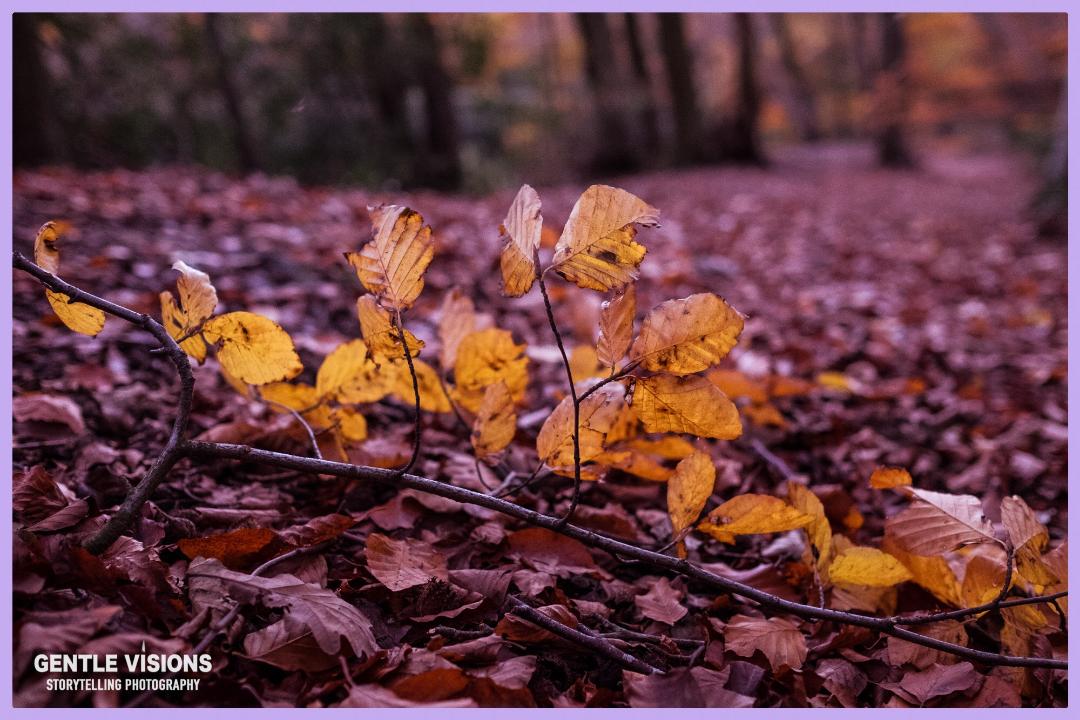
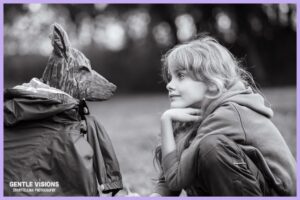
Photographer James Gentle, interviewed by Leslie Tate, describes how he aims to capture people ‘at their natural best’ in his pictures. James runs Gentle Visions, a photographic business in Tring, Herts, UK, specialising in what he calls ‘Storytelling Photography’ – where he captures the authentic essence of his subject or tells the real story of an event or business.
Leslie: Where did your interest in photography come from?
James: I remember when my Granny gave me my first camera, it was a very simple Box Brownie, which l still have hanging in my office. I started taking pictures of the family and our family summer holidays with our grandparents in Cornwall.
When l was learning photography, it was in the days of camera film. This taught me to take time to think about both the composition and lighting of images, because film and developing was to me quite expensive. I therefore had to make every shot of the 24 or 36 film count. Today with digital we have the luxury of instantly seeing the images we’ve taken, but before we had to go and get them developed, so it might be a week or so later until you saw your photographs.
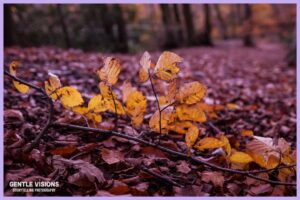
I progressed from the box brownie to eventually get an SLR camera. I still remember my first it was a Pentax ME Super with a 50mm lens. Having just one prime lens (not a zoom), meant l had to get creative with how l captured things. It’s still a good discipline to work with prime lens.
Our dog Sukie was my first muse and l can still recall to this day capturing her in different shapes as she relaxed after a long walk.
My first ‘job’ was taking our school house photographs. The photographs were simple line-ups of the classes together, but l was able to sell copies and realised that money could be made by something l enjoyed doing.
Leslie: As a photographer how do you try to make your pictures fit the individual?
James: ‘You can’t Photoshop personality’, so it’s vital to capture this when shooting people, especially when you want others to connect with them. I’m very much into post-shoot image manipulation, but focus on capturing authentic, real images.
I encourage people to be natural and for the majority this is by putting them in a familiar environment, doing what they do well. In other words, capturing them at their natural best.
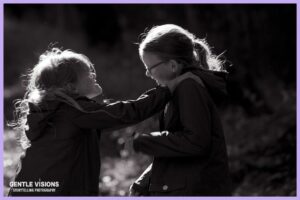
In its purest form a shoot can be completely un-directed. I become a fly on the wall observing the action and capturing authentic documentary-style photography. Ideally the subject forgets l am even there and behaves in a completely natural way, rather than trying to live up to how they think they should behave in front of a camera, based on their experiences and stereotypes.
When pure documentary-style photography does not fit the bill, l still want to keep the shoot experience as authentic and natural as possible. We would set up the space beforehand to maximise the available light and show off the products, props or place. I would also give directional prompts, just enough to get the shot l wanted, without upsetting the natural balance of the situation. For example l’d say, “Could you just show me that product again,” rather than, “Hold it like this, look this way, move your left arm down and smile.”
Leslie: What kinds of stories do you tell with your photography?
James: The story l tell very much depends on the client and their objectives. I focus more now on brand and business photography, while still maintaining an active interest in performing arts and lifestyle portraiture.
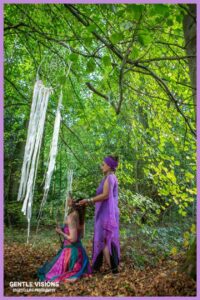
For brand and business photography before l go anywhere near a camera l’ll meet with the client to understand them and the message and image they wish to portray. Any photographer worth their salt will of course do this ground work, but l like to think that my 20+ years of brand marketing experience enables me to both dig a bit deeper and help define the important messages if necessary.
A brand, as l define it, is everything you and your business says and does that impacts on its perception. It’s not just the branding, which might include your logo and colour scheme. With this in mind l think it’s vital to really get under the skin of what your brand is about, and what makes it special for your target clients. It’s not just what a business does that’s important but also how and why. My aim is to bring this to life visually. Photographs not only instantly show what might take minutes to read, but they also tap into a different part of our brains and evoke more emotional responses.
We live in a very visual world where images are powerful and despite the fact that everyone knows images can be manipulated, people still connect with them in a more trusting way than words alone.
Leslie: When you’re working with a subject, how do you try to get beneath the surface of the picture?
James: I ask myself what is the purpose of the picture? What am l or my client trying to convey? That’s the science bit, you can think through and plan out ahead of the shoot. Then there is the art part which can involve experimentation, trying different compositions, angles or playing with the light to evoke certain moods. I don’t wish to sound like a broken record, but the more you know about your subject’s purpose the easier it is. Easier to define what you are after not necessarily how you capture it in camera. Sometimes we have to get creative there!
On other occasions, such as wedding photography for instance, I look around the action to see what elements or little details will compliment the obvious story. Capturing the little details at a wedding will help personalise it for the couple, who have often spent many hours, days, or even years planning. A wedding is also about sharing your celebration with friends and family, so capturing them and their emotions is an important aspect, especially for the happy couple whose day goes by in a hazy blur.
Leslie: What are you aiming to achieve when taking pictures of performances?
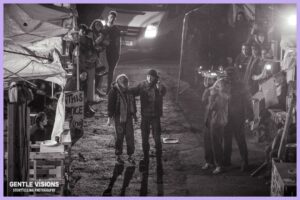
James: My goal for performance shots is ultimately to capture the action and expression which connects with the viewer. This common goal is of course combined with the specific needs of the clients’ brief.
You are not there to direct the show, that has of course been done along with the costumes and choreography already. The lighting has also been designed to augment the atmosphere and enhance the overall impact for the audience. Constantly changing lighting or a lack of light and lots of action are your key challenges.
In a live performance environment you have to act quickly to juggle multiple things. First composition, ideally being in the right place to show interaction between the actors on stage. Second, manually adjusting the ever-changing stage lighting. Then focusing, which l don’t leave to chance, l manually select where l want my focus point according to the composition. Then press the shutter at the ideal time to capture the expression or the action. That takes a lot longer to say than do. In practice it all happens in less than a second and becomes almost automatic when you are in the zone. It’s an environment where nothing stands still and you have to keep moving and adapting. To be honest, I don’t expect to nail every shot every time, as one might in a totally controlled studio environment.
Interestingly when l’ve shot both the dress rehearsal and an actual performance, I really notice how the actors raise their game for the latter. Shooting live performances has its challenges, but when you capture them doing what they do best, and giving it their all, you get something special. Authenticity is big part of what l do and plays a major role in my Storytelling Photography.

Leslie: What are the qualities of Henry Moore’s work that interest you?
James: Henry Moore’s three-dimensional abstract sculptures very much appeal to me, both as an individual to admire and as a photographer to shoot. They offer the photographer the scope to play with the shapes and the light, allowing one to explore different angles and interpret their beauty in a unique way.
The same photographic experimentation and interpretation can also be applied to far more mundane everyday objects. Artists like Henry Moore or Antony Gormley (another favourite) provide not just art to admire but also the inspiration to look at things and see them differently.
Leslie: Why do take photographs?
James: My flippant answer to that is that l can’t draw! I am a very visual person and photography is my creative outlet. When l am taking photographs l’m ‘in the zone’ totally focused on that moment alone. So much so that if you asked me after a live theatrical performance shoot to name the main characters or discuss the plot line l’d struggle to do so. I’m focused just on the visual and I’m totally happy there, it’s my autopilot so to speak.
On a professional level I take photographs to help business and brands make a visual impact in a crowded and visually stimulating world.
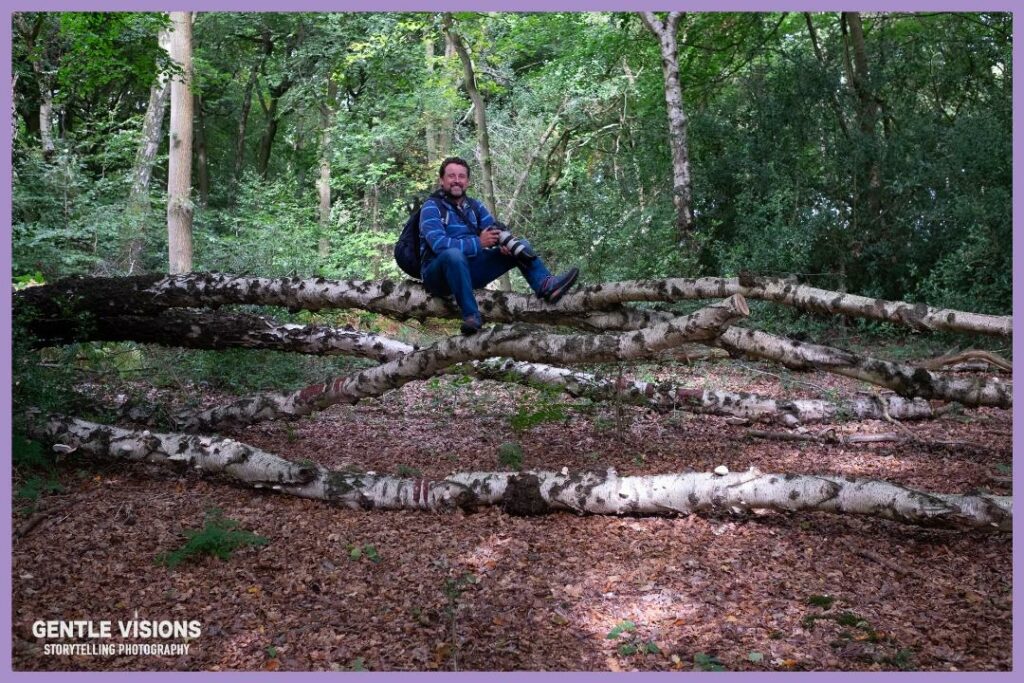
Leslie: Who are your greatest creative influences – why them?
James: You might expect me to reel off some famous creatives or photographers, but while there are those l admire, they are not the greatest influences for me. I am constantly amazed and inspired by nature, the structures, the intricate detail, the beauty, the seasonal change and the mood and atmosphere that light and weather create.
Being around people who appreciate your creative work is also very important and in this regard my wife is a huge positive influence.
Next week’s interview with Scottish artist Jane Rushton will cover her trips to Greenland and Svalbard, her relationship to maps, geology and atmospheric scientists, as well as to climate change.
ABOUT LESLIE TATE’S BOOKS:

I interviewed poet & artist Jane Burn who won the Michael Marks Environmental Poet of the Year 2023-24 with A Thousand Miles from the Sea.

I interviewed ex-broadcaster and poet Polly Oliver about oral and visual poetry, her compositional methods, and learning the Welsh language. Polly says, “I absolutely love

I interviewed Jo Howell who says about herself: “I’ve been a professional photographic artist since I left Uni in 2009. I am a cyanotype specialist.


Poet Tracey Rhys, writer of Teaching a Bird to Sing and winner of the Poetry Archive’s video competition reviews Ways To Be Equally Human. Tracey,
| Cookie | Duration | Description |
|---|---|---|
| cookielawinfo-checkbox-analytics | 11 months | This cookie is set by GDPR Cookie Consent plugin. The cookie is used to store the user consent for the cookies in the category "Analytics". |
| cookielawinfo-checkbox-functional | 11 months | The cookie is set by GDPR cookie consent to record the user consent for the cookies in the category "Functional". |
| cookielawinfo-checkbox-necessary | 11 months | This cookie is set by GDPR Cookie Consent plugin. The cookies is used to store the user consent for the cookies in the category "Necessary". |
| cookielawinfo-checkbox-others | 11 months | This cookie is set by GDPR Cookie Consent plugin. The cookie is used to store the user consent for the cookies in the category "Other. |
| cookielawinfo-checkbox-performance | 11 months | This cookie is set by GDPR Cookie Consent plugin. The cookie is used to store the user consent for the cookies in the category "Performance". |
| viewed_cookie_policy | 11 months | The cookie is set by the GDPR Cookie Consent plugin and is used to store whether or not user has consented to the use of cookies. It does not store any personal data. |